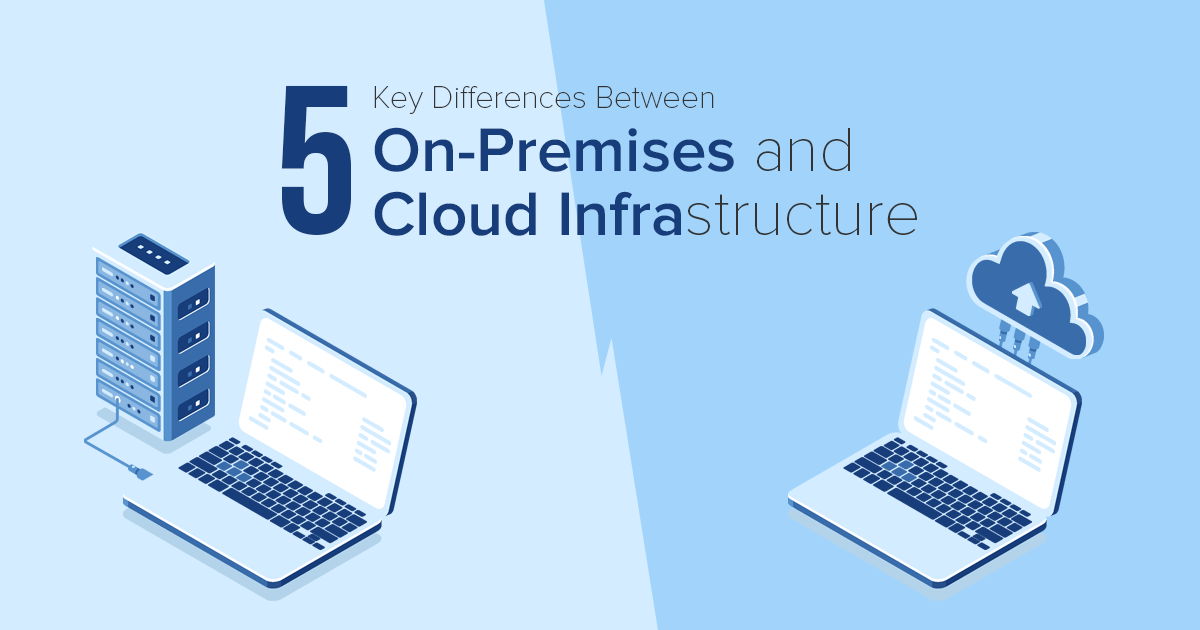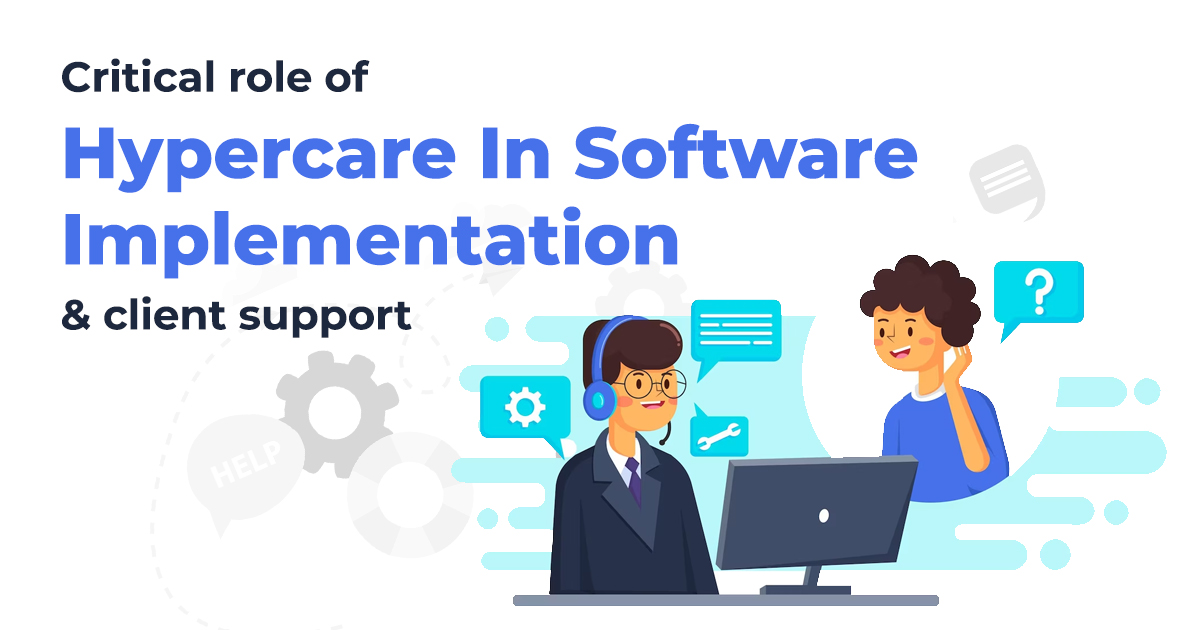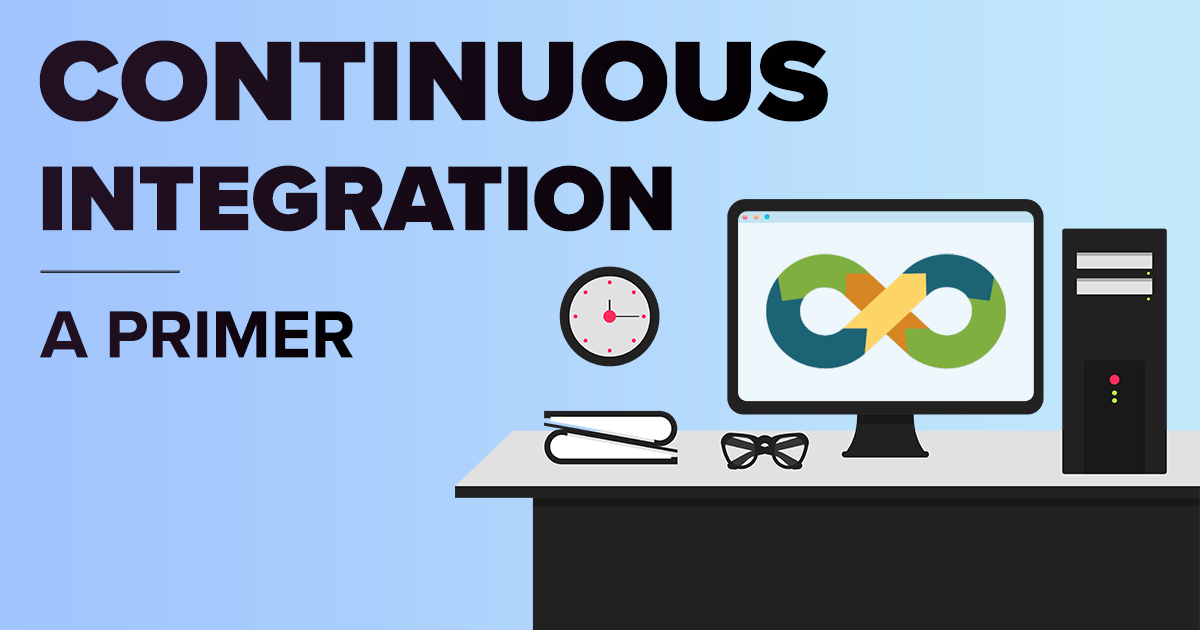Five Key Differences Between On-Premises and Cloud Infrastructure.
February 9, 2021 3:10 pm | by Jyotsana | Posted in Tech
The cloud computing market was valued at $272 billion in the year 2018; the same is expected to touch $623.3 billion by 2023. That is huge, like a massive amount of money. Hence, it comes as no surprise that almost every organization is moving its operations to the cloud. I know it is the most cliched line of all time. But I used a word there: almost and not all. Because still, there are many takers of on-premises data management and storage services.
Your company could be a million-dollar venture running seamlessly on the cloud environment. Or it could be a smaller financial management company that cannot function without a dedicated on-premises server. It all depends on the needs and type of features you are looking for the solution to provide. But the question is: how to decide between on-premises and cloud infrastructure? That is what I am here for.
Today, we’ll discuss five key characteristics that form the basis for differentiation between on-premises and cloud servers. You can base your decision on these characteristics.
- Deployment
On-premises: The resources are deployed locally, within your organization’s private IT infrastructure. It is a closed area where only personnel you have granted permission to can gain access. You are the true owner, and it is your responsibility to maintain and update the server.
Cloud Computing: The server owner is a third-party, and they provide you access to resources online. The onus of maintenance and other things falls on the third-party. Mind you, four types of cloud deployment models are available: public, private, hybrid, and community. Each with its own set of pros and cons that are discussed at the end.
The question: Is the company interested in taking up the responsibility of server maintenance and updates?
- Authority
On-premises: You have full authority over the IT infra, which means complete control over the data, whatever happens to it, for better or worse. Companies storing sensitive information prefer such a higher degree of authority.
Cloud Computing: The ultimate data ownership resides with the cloud service provider as you are storing data on a third-party server. Downtime and data privacy are the major issues that restrict big organizations (especially government and financial institutions) to turn to cloud computing.
The question: Can the organization handle some downtime? Is data-privacy a must-have for the company and the clients?
- Security
On-premises: This type of infrastructure provides a certain level of privacy and security that a third-party-owned/managed cloud environment lacks. Companies belonging to the banking and government industries cannot afford the slightest of data spillage. Hence, they avoid opting for off-premises cloud services to eliminate data-sharing with third parties.
Cloud Computing: It is comparatively less secure than the on-premises infrastructure. Yes, there exist the option to purchase a private cloud instead of the public/hybrid, but the data is still stored on third-party servers, out of your control. Over the years, cloud service providers have proved their brilliance: adopted industry-standard practices and certificates to make the cloud more secure.
The question: Can the company take into account some security and privacy-related risks?
- Cost
On-premises: The discussion will be incomplete (and useless) without talking about the costs involved. On-premises infrastructure is expensive. Hardware, space, electricity, area security, maintenance and running costs, etc. the company has to manage it all. But there are many benefits like better security, sole ownership, strict policy compliance, data privacy, and much more.
Cloud Computing: This off-premises infra makes up for lack of security and privacy in the form of cost-efficiency and high scalability when compared to on-premises. Since the resources are shared between many companies, the cost goes down and there is also no need for maintenance. You can scale up and down the resources by adjusting the subscription fee.
The question: Is cost the guiding factor in selecting the type of cloud infrastructure?
- Compliance
On-premises: Many organizations must adhere to certain government compliances, where disregard can impact their going concern assumption. Most observances are related to consumer/client data, be it financial or personal. Due to this, companies coming under the compliance umbrella opt for on-premises despite its cost and maintenance drawback.
Cloud Computing: It is not that off-premises is completely shadowed by the former when it comes to compliances. Cloud service providers are too required to adopt policies that fulfill necessary compliances. Before taking the subscription, always confirm the same with the service provider. However, governmental agencies and financial institutions avoid off-premises cloud environments owing to inherent security and privacy risk.
The question: Does the industry to which the company belongs give the freedom of choice in selecting the IT infrastructure? If not, what are the suggested to-do things?
Types of cloud deployment models.
Here is a brief introduction to the different cloud options available if you decide to opt for off-premises IT infrastructure.
- Public Cloud: As the name suggests, this cloud is available for public use, and the resources are located on the service provider’s premises. It is extremely cost-effective but prone to security and privacy breaches.
- Private Cloud: This cloud reaps the benefits of an on-premises infrastructure i.e. privacy, security, control over data, and offers the option of scalability. But it is expensive, where charges of some providers are as high as the on-premises cloud.
- Hybrid Cloud: It combines the preferred features of the private and public cloud. A hybrid cloud is more secure than the public cloud and light on the pocket than the private cloud. Many organizations opt for a hybrid cloud to sate their scalability needs while storing data on their on-premises server.
- Community Cloud: It is the common interest of companies belonging to the same industry. For example, small IT companies who need private cloud-like services at public cloud prices often join hands with similar level companies and opt for a private cloud that belongs to one community. Hence the name community cloud.
I hope the blog was able to solve your IT infrastructure confusion. Like I said above, choosing the type of infra is a subjective choice, where you cannot make a decision based on what is working best for the other company.
If you’d like to discuss more on the topic or share your thoughts or wish to contribute, please contact Sarvika Technologies here.
Written by Jyotsana
Manager, Client Solutions
Jyotsana has a wide experience in customer relations in the software industry. She completed her MSc in Business Administration from the University of Amsterdam in year 2018. When not being a super awesome manager, Jyotsana likes to mentor hearing and/or vocally impaired children in a public school in the city. She believes in being kind. Her forever-passion: #saveearth




